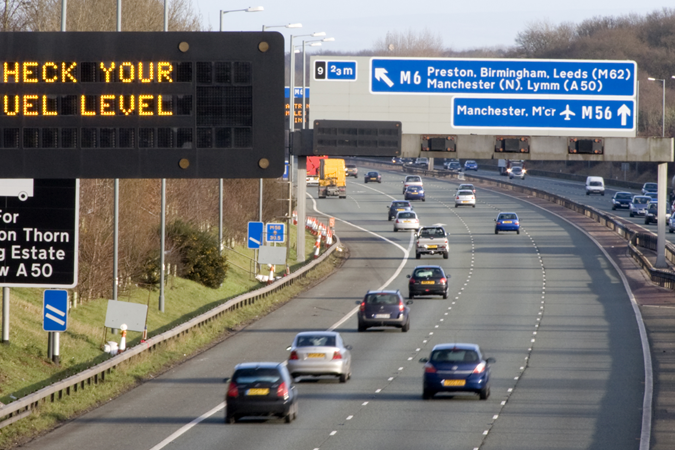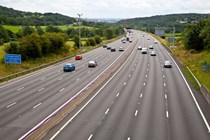Recent figures from BBC’s Panorama reveal that crucial safety technology, designed to keep road users safe on smart motorways, suffered from 397 power outages over two years. These failures increased the accident risk on the affected stretches of smart motorways, with no way of monitoring broken down cars.
In some of the reported technical failures, safety equipment such as CCTV and active road signs were out out of action for days at a time. A traffic officer who works on the motorway network revealed that they no longer consider the network safe in the Panorama report.
The revelations come after the RAC’s call for the government to reinstate the hard shoulder on smart motorways on 12 April 2024, and the subsequent national debate. The proposal has reportedly been considered at Cabinet level and has been a focus of the House of Commons Transport Committee, in response to persistent safety concerns.
Prime Minister Rishi Sunak cancelled all planned new smart motorways in 2023, a result of financial pressure and a lack of public confidence in the roads. The decision to shelve planned conversion work on the M1, M6, and M25 alone saved an estimated £1 billion.
The first all-lane running (ALR) smart motorway was introduced 10 years ago on the M25 in Hertfordshire. There are now 193 miles of ALR smart motorways – which have no hard shoulder, with the existing safety lane converted into an extra running lane. Despite smart motorway’s advantages for motorist’s, such as reducing congestion and improving travel times by managing the traffic using roadside technology, worries over safety swiftly outweighed the need to reduce commuting times.
Although the plans for more new smart motorways were abandoned, £900 million is being invested in technology to make the existing networks safer, with no intention to reinstate the hard shoulder. However, the figures revealed by Panorama following a Freedom of Information request revealed that between June 2022 and February 2024, the 397 incidents of power loss on smart motorways made it difficult to detect broken-down vehicles.
Examples of safety technology being cut off for several days include:
- In July 2023, there were no signs, signals, cameras or radar at junction 18 on the M6 for five days.
- In September 2023, there were no signs, signals, or CCTV for five days junction 22 of the M62.
- In December 2023, there were no signs, signals, sensors or CCTV for three and a half days at the junction 6 on the M5.
The longest power outage, lasting 11 days, occurred on the M4, a section of smart motorway equipped with a hard shoulder, during which no signals or sensors were operational.
Edmund King, president of the AA says the power outages are dangerous, particularly on smart motorways with no hard shoulder. He adds: ‘The Panorama investigation questions what happens when technology fails, which is every driver’s worst nightmare.’

Simon Williams, RAC head of policy, says: ‘The hard shoulder is by no means a safe location, but in the event of a breakdown, it is far safer than being stranded in a live lane of traffic waiting for the ‘red X closed lane’ sign to be turned on. Then waiting for other drivers to do the right thing and move into another lane.’
Mr Williams adds: ‘The Government should either convert existing all-lane-running smart motorways to ‘dynamic’ ones, where the hard shoulder is only opened to traffic during busy periods, or repaint the white line and reintroduce a permanent hard shoulder on these roads.
In either case, queue-busting technology, such as variable speed limits, could remain to help ensure traffic flows as smoothly as possible.’
Statistics show the extent of the safety concerns
Statistics revealed in a report published by National Highways in December 2023 showed that motorways without a hard shoulder were three times more dangerous to break down on than those with an emergency lane.
The number of people killed or injured after a stopped vehicle was hit by a moving vehicle was 0.21 per 100 million vehicle miles travelled on ALR smart motorways between 2017 and 2021. That compares to 0.07 on controlled smart motorways, which have variable speed limits but retain a hard shoulder, and 0.10 on conventional motorways.
Motorways are generally considered safe compared to rural or urban roads, with fewer casualties and accidents. Despite the high speeds some drivers may reach on motorways these days. But the big question is whether smart motorways are safer than traditional ones?
The removal of the hard shoulder remains the primary concern. Drivers may encounter emergencies or find themselves stranded amidst fast-flowing traffic, which can be extremely dangerous — especially if they haven’t conveniently broken down near one of the refuge areas on ALR smart motorways. However, that’s not to say traditional motorways are the safest option. Controlled and dynamic smart motorway’s have statistically proven to be safer than any other when the technology is working.
What are the three main types of smart motorways?
- Controlled, with a permanent hard shoulder is similar to traditional motorways except with technology in place to assist with traffic flow, such as variable speed limits shown through digital signs.
- Dynamic, where the hard shoulder can be used as a driving lane, when the roads are busy, albeit with a reduced speed limit.
- All-lane-running, sees the former hard shoulder used permanently as a traffic lane, with emergency refuge areas found at intervals for drivers to pull into if needed.
What this means for you
The government faces calls to reinstate hard shoulders on all UK smart motorways. A very expensive demand to complete, given they had been accused of wasting money on the now cancelled project.
However, drivers will no longer see new smart motorway developments across UK roads. That’s not to say you won’t encounter existing smart motorways on popular routes such as most of the M25, the North West and the West Midlands.
With both the RAC and the House of Commons Transport Committee expressing concerns, there is a chance that drivers across the UK may witness the reinstatement of hard shoulders on ALR smart motorways in the future.
For all the latest advice, news and finance deals, sign up to the Parkers newsletter here.







